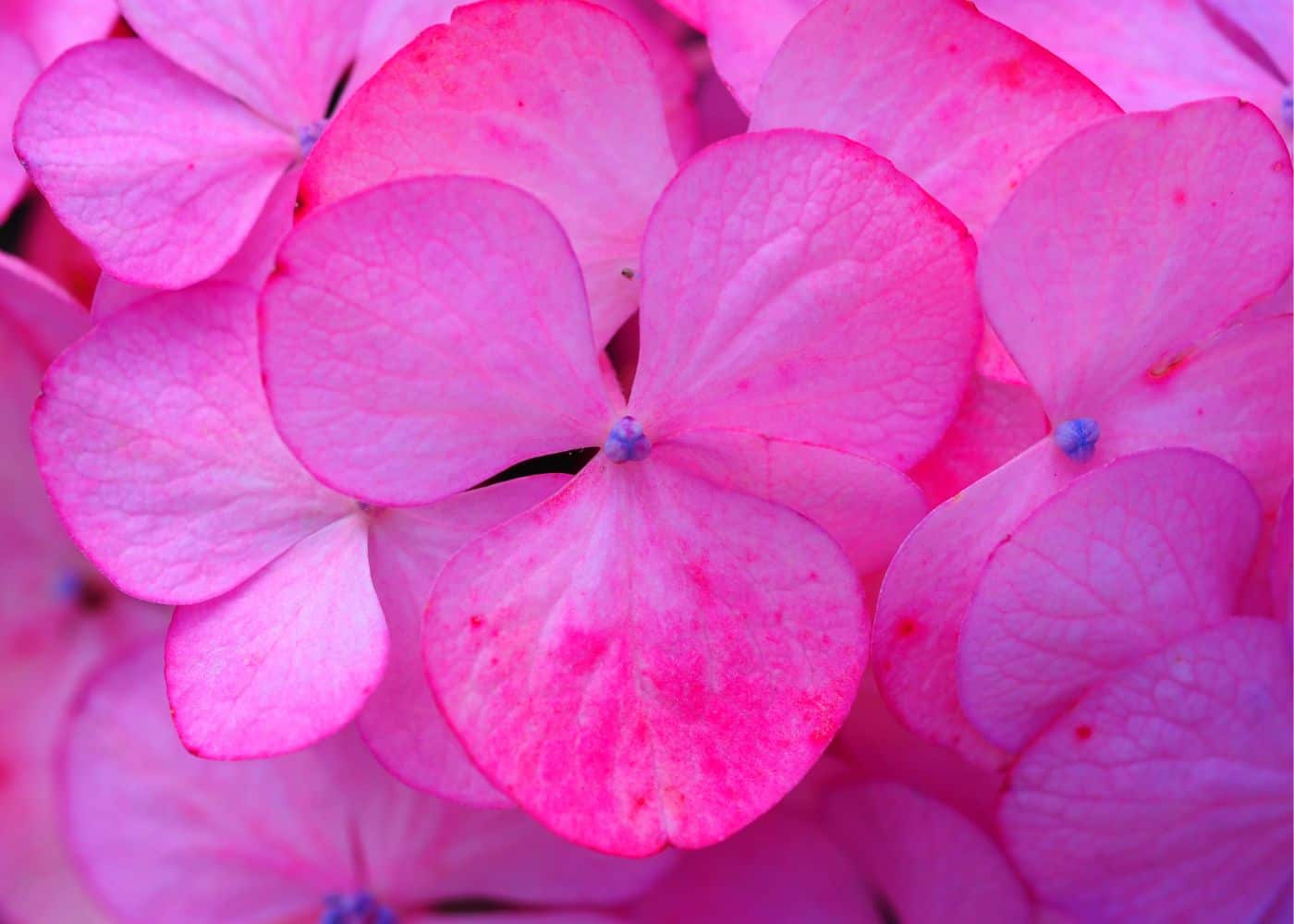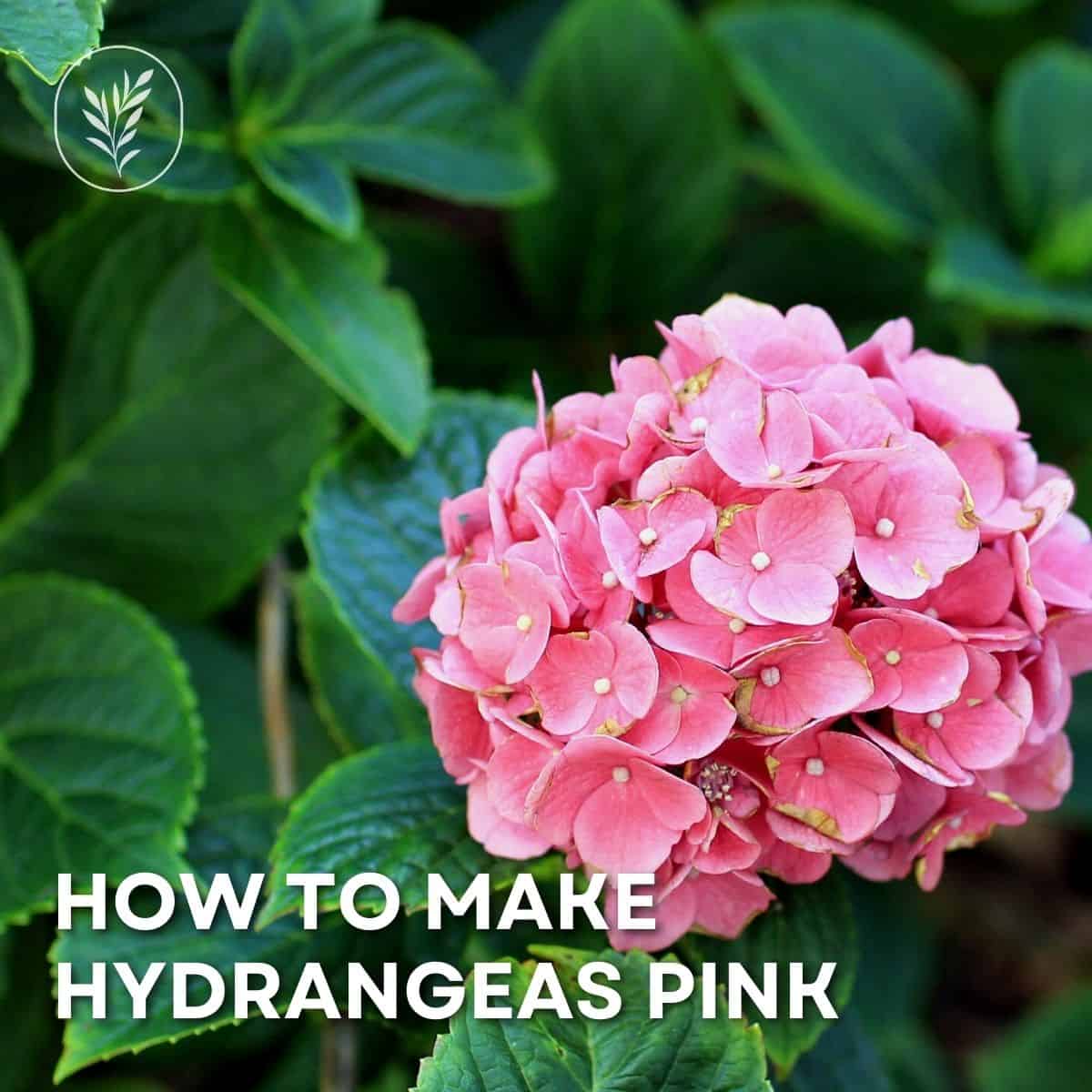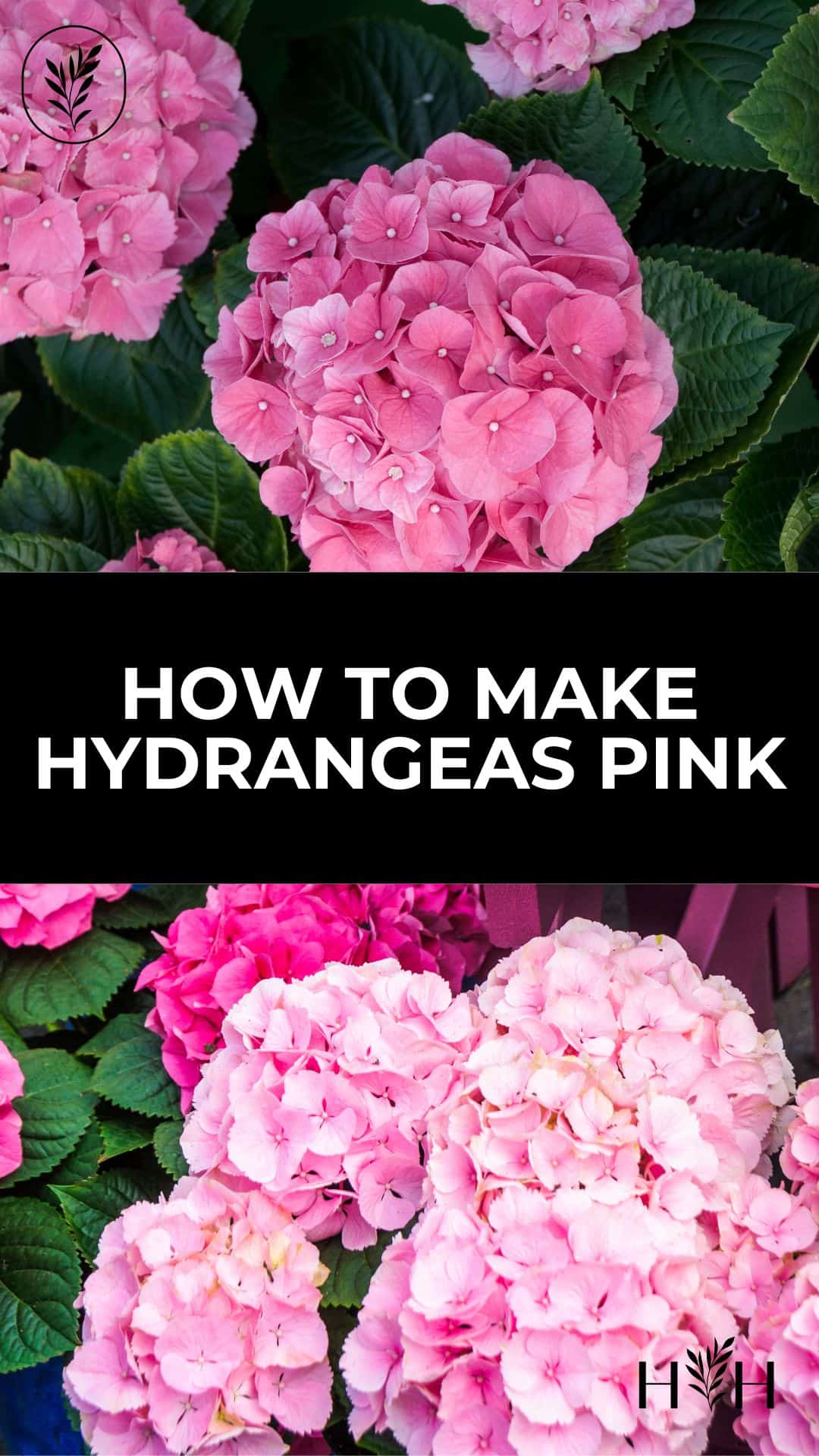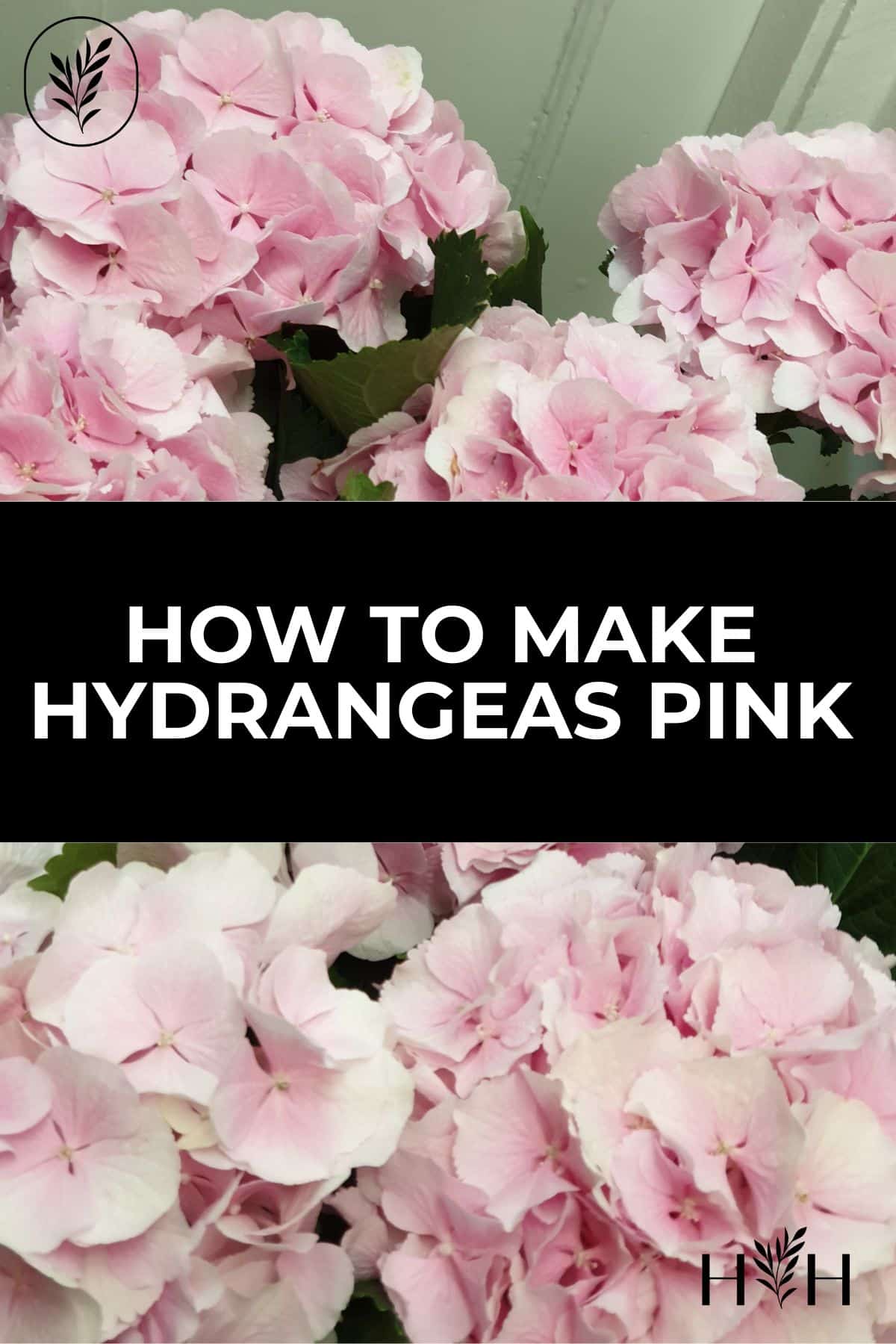To make your hydrangeas pink, start by bringing the pH of your soil up to a neutral or even slightly alkaline level. Avoid fertilizers for acid-loving plants or those that contain acidifying products like aluminum sulfate. Choose a variety known for its pink blooms, plant it where it can get some direct sunlight in the morning, and keep the plant well-watered.
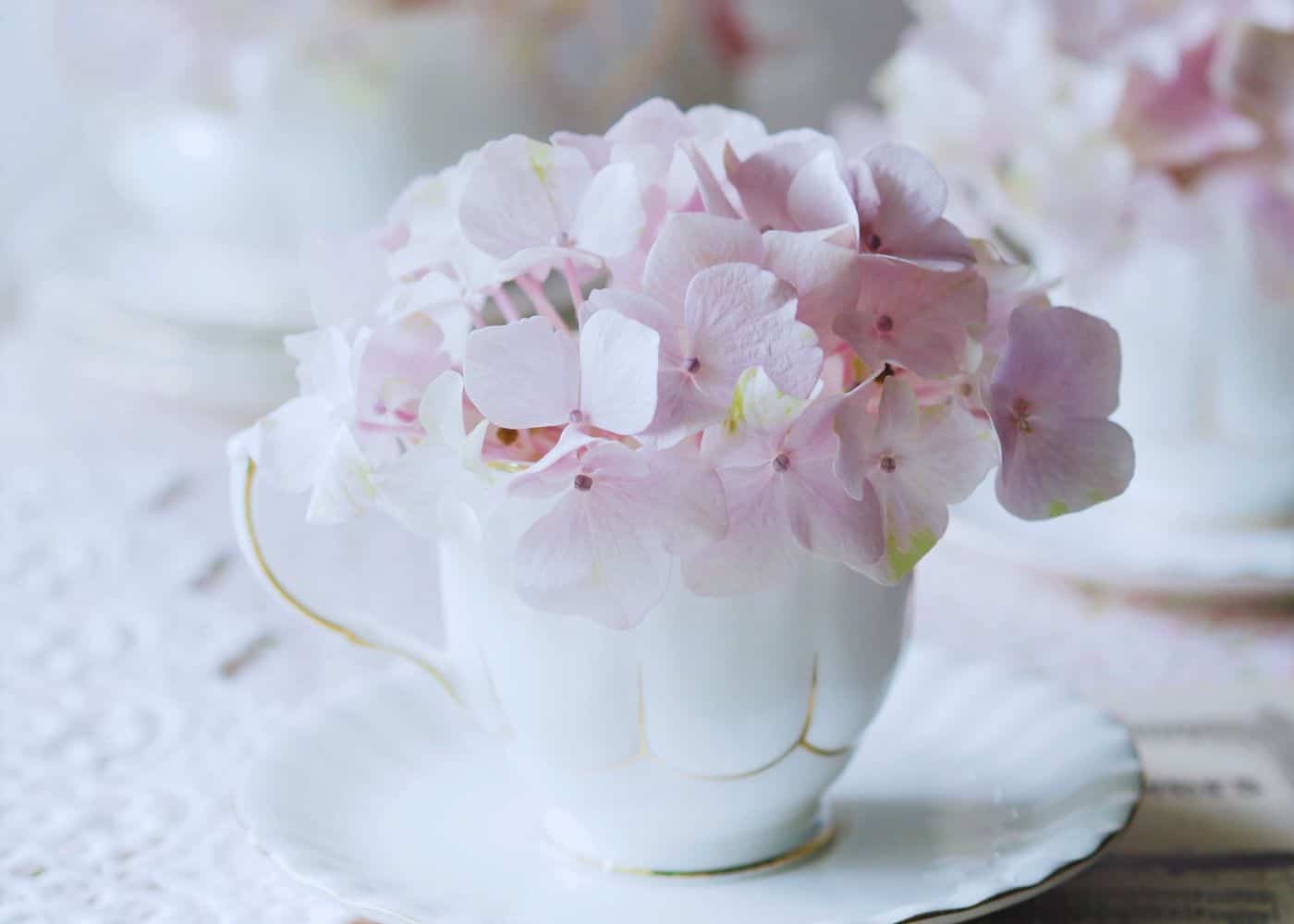
How to make hydrangeas pink
Many people struggle with how to make their hydrangeas pink instead of blue. Fortunately, there are several steps you can take to get the desired effect.
Soil pH
The soil pH level is one of the most important factors in determining the color of the hydrangea blooms in your garden. A higher soil pH (alkaline soil) will produce pinker flowers, while a lower soil pH (acidic soil) can create blue flowers.
Typically, a near-neutral pH of about 6.5 will produce pink flowers. You can even bring the soil pH up to a neutral 7.0 or slightly alkaline 7.5 for very pink flowers, but the plant will not absorb nutrients as easily at these higher pH levels. To ensure that your soil has the right balance for pink flowers, test it regularly and adjust it up as needed using garden lime (limestone).
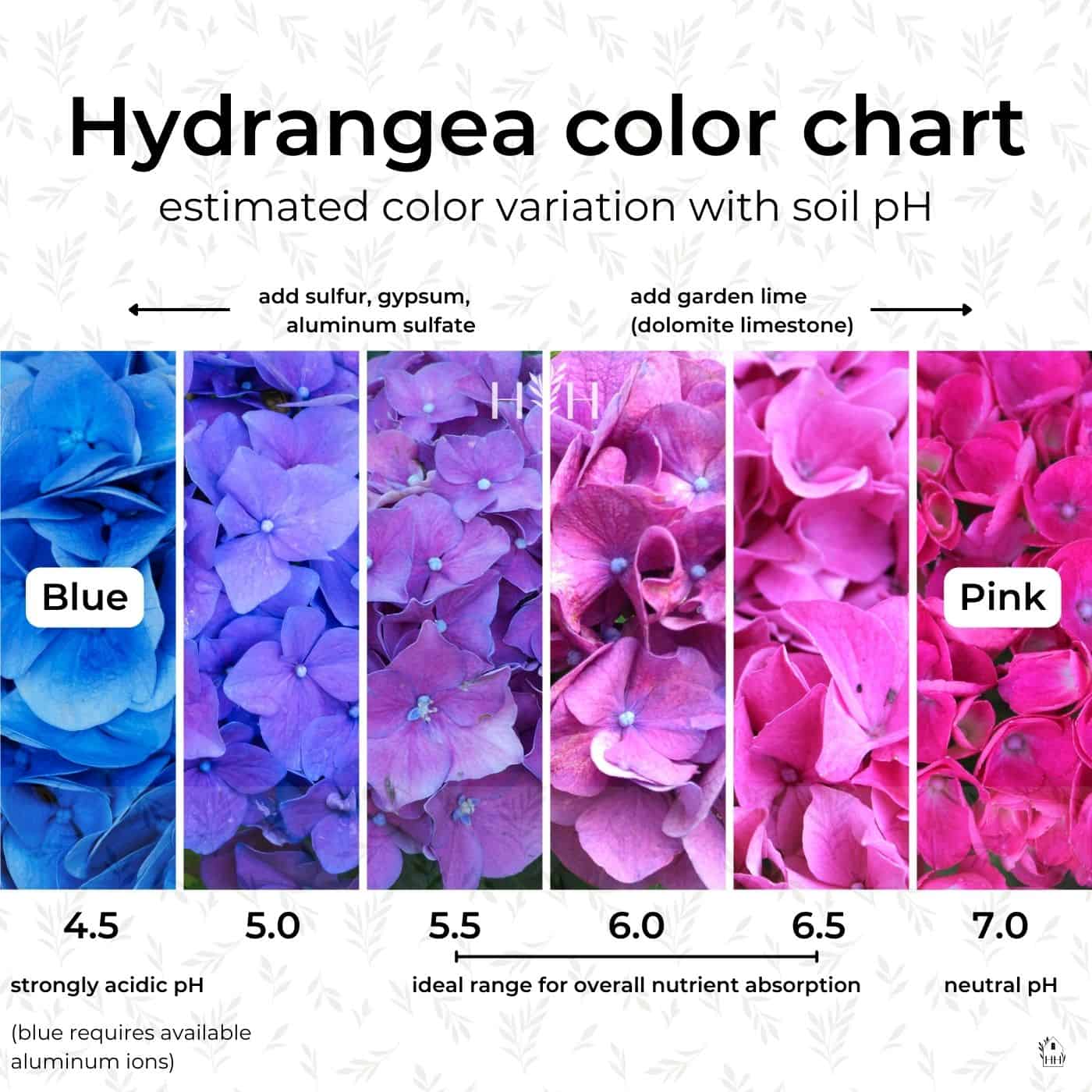
Nutrients
Fertilizing your plants correctly is also key when trying to achieve pink hydrangeas. You’ll want to avoid products that acidify the soil and/or add aluminum, as these characteristics can promote purple/blue flowers. Instead, look for all-purpose fertilizers that contain ample phosphorus.
Sunlight
In addition, providing adequate sunlight is essential for achieving healthy flowering plants with strong colors like pinks and purples rather than pale shades. Aim for at least 6 hours per day but no more than 8 hours per day since too much sun exposure can cause wilting leaves and faded blooms regardless of what type they are supposed to be.
Watering
Finally, proper watering techniques should also be used when caring for these delicate flowers so that they have enough moisture without becoming waterlogged which could result in yellowing leaves or discolored petals. This type of plant prefers moist but well-drained soils rather than soggy ones full-time. To achieve this balance, use a hose attachment set on low pressure (or even better – drip irrigation) around each plant’s base every few days during dry spells only; otherwise, just let nature do its thing by relying on natural rainfall whenever possible instead.
How soil ph affects hydrangea flower color
Soil pH is an important factor in determining the color of hydrangea flowers. Hydrangeas are a popular flowering shrub that can produce blooms in shades of pink, blue, and purple depending on the acidity or alkalinity of their soil. The lower the pH level (more acidic), the bluer your hydrangeas will be; while higher pH levels (more alkaline) will make them more pink.
To ensure you get beautiful pink blooms from your hydrangeas, it’s important to understand how to adjust soil pH levels for optimal results. Here are some tips:
Testing soil pH level
Testing your soil’s pH level is essential if you want to control flower color in hydrangeas. You can purchase a home testing kit at most garden centers or online stores. Once you have tested your soil, use this information as a guide when adjusting its acidity or alkalinity with amendments such as lime or sulfur powder.
Adjusting soil acidity/alkalinity
If your test reveals that the soil is too acidic to produce pink flowers, add the lime powder to raise its pH level and make it more alkaline. On the other hand, if it’s too alkaline for blue blooms, then add sulfur powder which lowers its pH level and makes it more acidic. Keep in mind that these amendments take time to work so don’t expect instant results.
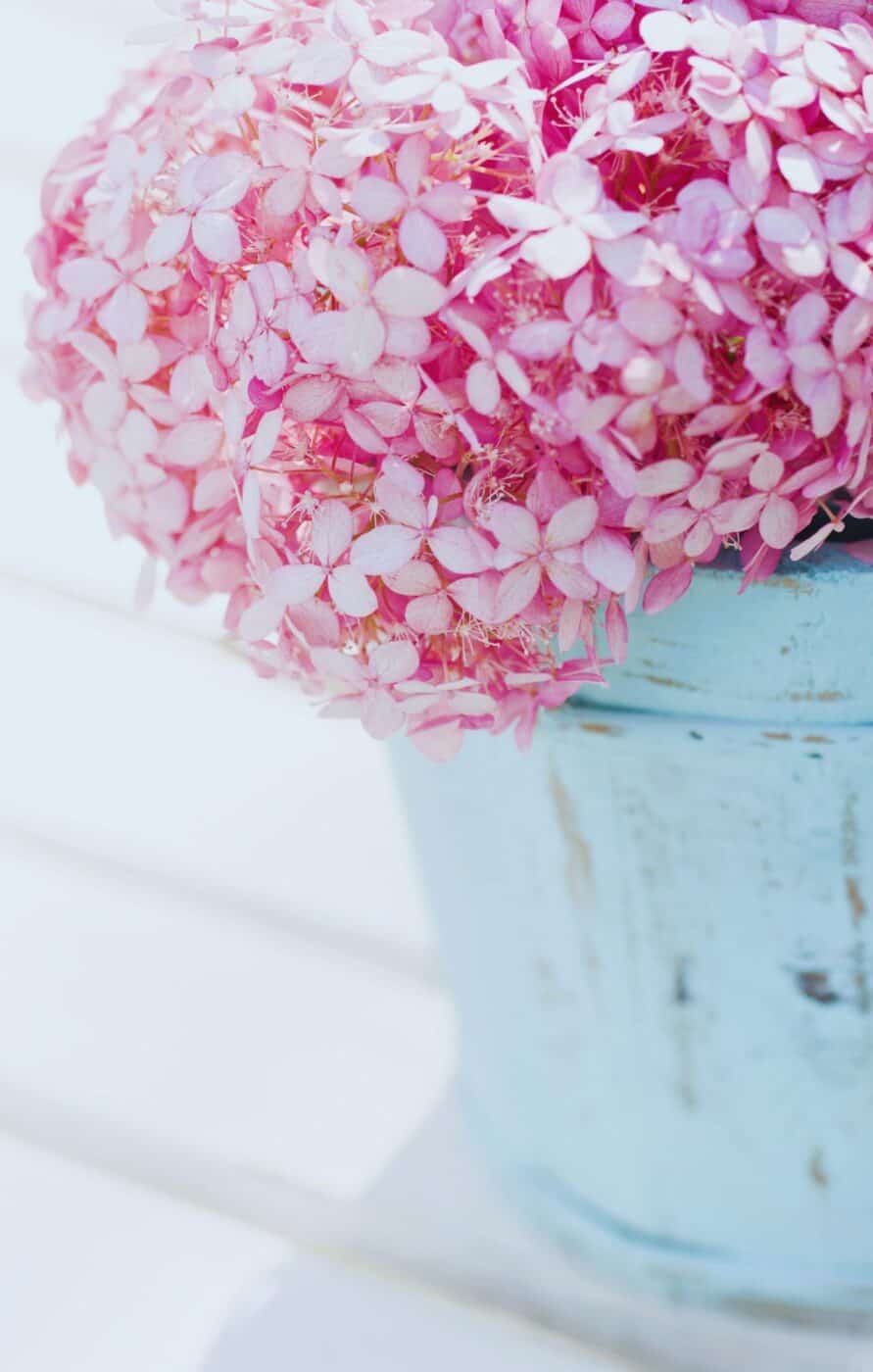
Fertilizer for pinker hydrangeas
When it comes to making hydrangeas pink, fertilizer is key. The type of fertilizer you use and how often you apply it can make a big difference in the color of your blooms.
The best fertilizers for achieving pinker hydrangeas are those that contain aluminum sulfate or ammonium sulfate. These types of fertilizers help lower the soil’s pH level, which is important for creating pink flowers. Aluminum sulfate will also add iron to the soil, which helps create a more vibrant shade of pink.
It’s important not to over-fertilize as this can cause too much growth and reduce flower production. For established plants, apply one tablespoon per square foot every three months during spring and summer when they are actively growing and flowering. If using granular fertilizer, water thoroughly after application so that it has time to dissolve into the soil before being taken up by plant roots.
For newly planted hydrangeas, wait until they have become established before applying any fertilizer – usually about two weeks after planting – then follow with regular applications every three months during active growth periods (spring/summer). When using liquid fertilizer on new plants, be sure to dilute it according to package instructions, as these products tend to be stronger than granular varieties and could burn young roots if applied at full strength without proper dilution first.
If you want an even deeper shade of pink from your hydrangea blooms, try adding some Epsom salts or magnesium sulfate directly around each plant once a month throughout their growing season. This will help increase magnesium levels in the soil which encourages deeper shades of pink.
Using the right fertilizer is essential for achieving a pinker hue in your hydrangeas. Now let’s explore how sunlight plays an important role in bringing out their natural color.
Sunlight
Sunlight is essential for hydrangeas to turn pink. The amount of sun needed depends on the variety of hydrangea, but in general, they need at least four hours of direct sunlight each day. Too much sun can cause the flowers to fade and burn, so it’s important to provide just enough light without going overboard.
If your hydrangeas are not turning pink, they may be getting too little or too much sunlight. To determine if this is the case, check how many hours of direct sunlight your plants receive daily. If you find that they get less than four hours a day, try moving them to an area with more exposure to sunshine or use a shade cloth during peak afternoon sun times when temperatures soar above 80 degrees Fahrenheit (27 Celsius).
On the other hand, if you notice that your plants are wilting or have yellowed leaves due to overexposure from intense midday rays, then it’s time for some extra protection from the elements, such as planting them in a shadier spot or using a trellis with lattice panels attached which will help filter out some of those harmful UV rays while still allowing enough light through for photosynthesis purposes.
When selecting an ideal location for your hydrangeas, keep in mind that morning and late afternoon sun is best since these periods tend to be cooler and less harsh on delicate foliage compared with mid-day heat waves. Additionally, avoid placing them near walls that absorb heat quickly and radiate it back onto plants causing scorching damage over time. Instead, opt for areas where there is ample air circulation like open garden beds surrounded by grassy lawns or flowerbeds bordered by shrubs/trees providing natural shade coverage throughout sunny days.
Adequate sunlight is essential for hydrangeas to turn pink, but it’s only part of the puzzle. Now let’s look at how we can use watering to achieve a beautiful pink hue.
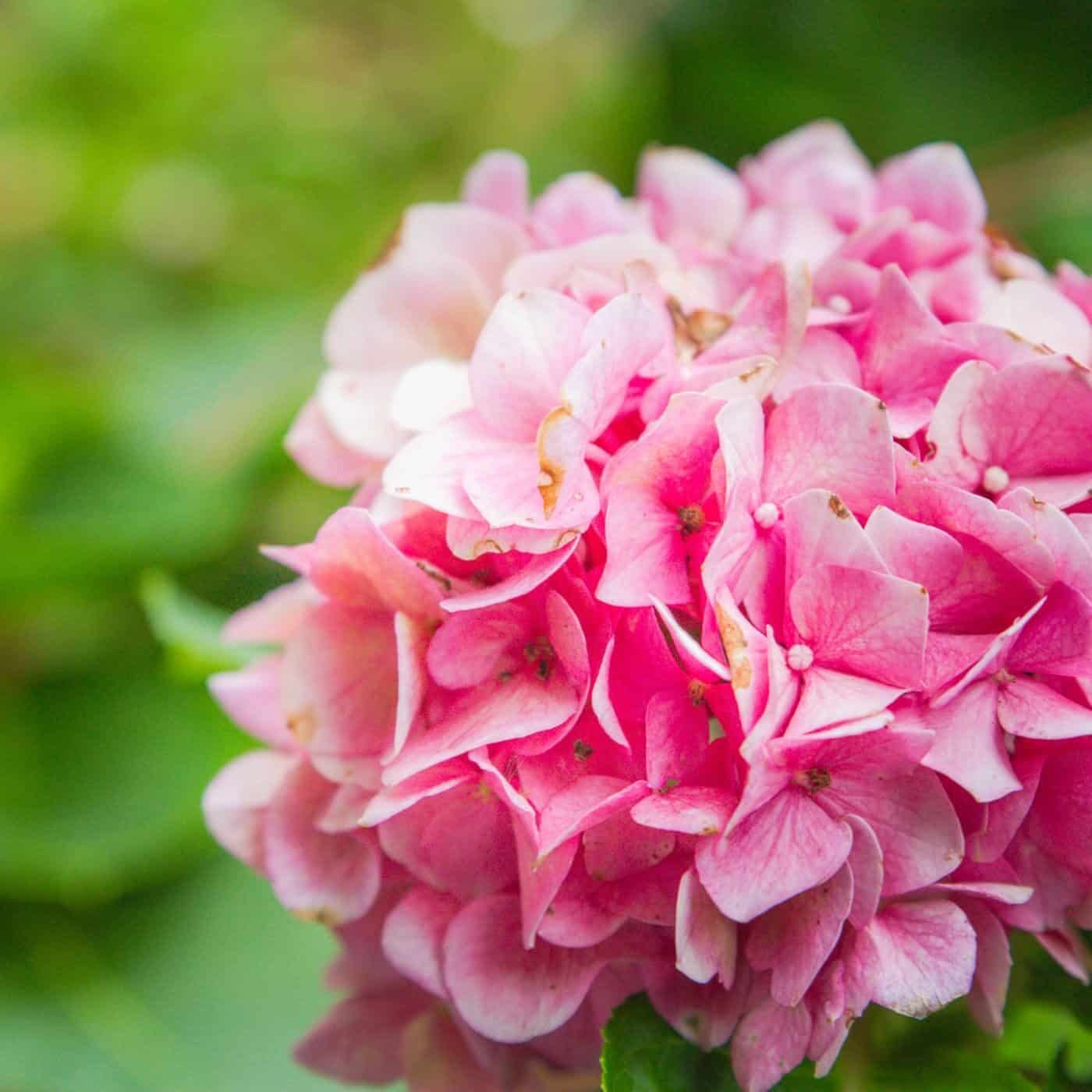
Watering your hydrangeas for vibrant blooms
Watering is essential for hydrangeas to turn pink. The amount of water needed depends on the type of soil and climate in which they are planted. In general, hydrangeas need about 1 inch of water per week during the growing season. If you live in an area with hot summers, it may be necessary to increase this amount to 2 inches per week or more. It’s important not to over-water as this can lead to root rot and other problems.
It’s best to give your plants a deep watering once a week rather than several shallow ones throughout the week as this encourages deeper root growth and helps prevent fungal diseases from developing due to wet foliage staying too long on the plant leaves. To ensure that you are giving your plants enough water, use a rain gauge or moisture meter so that you know when it’s time for another drink.
When watering hydrangeas, make sure that all parts of the plant get watered including both sides of each leaf if possible – especially during dry spells or periods of extreme heat where evaporation can occur quickly. Additionally, try using mulch around your plants which will help retain moisture in the soil and reduce weeds at the same time. Finally, avoid getting water directly onto flower buds as this could cause them to drop off before blooming properly; instead, focus on keeping roots moist by applying water near their base only.
FAQs about how to make hydrangeas pink
Will vinegar turn hydrangeas pink?
No, vinegar will not turn hydrangeas pink. Vinegar is an acid and can be used to lower the pH of soil temporarily. It won’t change the color of hydrangea from another hue to pink. If you want your hydrangeas to be pink, you’ll need to choose varieties that are naturally so, keep soil pH at neutral or alkaline, and/or use a fertilizer specifically designed for this purpose.
How do I make my hydrangeas pink or red?
Hydrangeas are a beautiful addition to any garden, and many people want to make them pink or red. To do this, you need to adjust the pH of the soil around your hydrangea plants. Make sure that your soil is neutral or slightly alkaline by adding garden lime. With regular maintenance and care, you should be able to achieve vibrant pink or red hydrangeas in no time.
What do you feed hydrangeas to keep them pink?
To keep hydrangeas pink, you should feed them with an all-purpose plant food and perhaps some garden lime. Avoid products that contain aluminum sulfate, which is commonly used to turn hydrangeas blue.
Be sure not to overfeed your plants as this could cause damage and discoloration. Lastly, it’s important to water regularly but avoid overwatering which can lead to root rot and other issues. With proper care and feeding, your hydrangeas should stay vibrant and beautiful.


